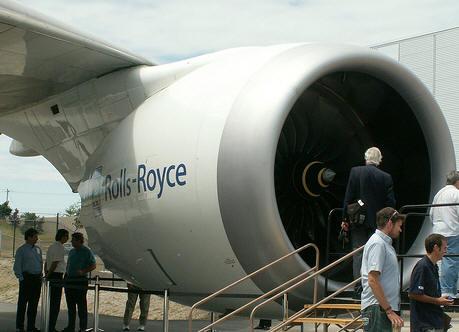
NEWSROOM
 |
NEWSROOM |
|
|
|
|
|||
|
By Mike Mitchell |
||||
 |
December 20, 2009 - Boeing’s 787 Dreamliner historic first flight was powered by Rolls Royce Trent 1000 engines, the latest generation in the successful Trent family. The Trent 1000 is the latest member of the Rolls-Royce Trent family to take to the skies. Trent engine technology has accumulated more than 37 million flying hours since the first Trent entered service in 1995. At take off each Trent 1000 engine generated as much power as 1,000 family cars.
Rolls-Royce has a
long track record of reducing the environmental impact of its products
and developing new low emission products, while maintaining exceptional
operating performance. The |
|||
|
At 10:27 am Pacific Time (18:27 GMT), on the
15th December 2009 the
first Boeing 787 Dreamliner eased effortlessly into the skies powered by
two Rolls-Royce Trent 1000 engines. This marked the debut of the
quietest, cleanest and most fuel efficient airframe and engine
partnership flying today.
Boeing selected the |
||||
|
The
Particular attention has been dedicated to reducing all areas of life
cycle cost for the
To improve component life the Trent 1000 features new technology such as
soluble core High Pressure (HP) turbine blades, new manufacturing
methods produce more effective cooling for longer-life blades and
improved fuel burn.
With the introduction of new service packages from Rolls-Royce,
maintenance is increasingly focused. Predictive Engine Health Monitoring
has been further developed from the
Rolls-Royce, a world-leading provider of power systems and services for
use on land, at sea and in the air, has established a strong position in
global markets - civil aerospace, defense aerospace, marine and energy.
As a result of this strategy, Rolls-Royce today has a broad customer
base comprising more than 600 airlines, 4,000 corporate and utility
aircraft and helicopter operators, 160 armed forces, more than 2,000
marine customers, including 70 navies, and energy customers in nearly
120 countries, with an installed base of 54,000 gas turbines.
Rolls-Royce employs over 38,000 skilled people in offices, manufacturing
and service facilities in 50 countries. The Group has a strong
commitment to apprentice and graduate recruitment, and to further
developing employee skills.
Sixty per cent of research and development investment and 40 per cent of
new product development spending over the past five years has been
outside the Annual underlying revenues were £9.1 billion in 2008, of which 52 per cent came from services revenues. The firm and announced order book stood at £57.5 billion at 30 June 2009, providing visibility of future levels of activity. |
| ©AvStop Online Magazine Contact Us Return To News |
|